
Agenda |
Note: Subject to change
Tuesday, October 22, 2024
9:00 am - 12:00 pm

Senior Advisor and Manager, Electrification Technology
Quanta Technology, LLC
profile

Consulting Architect and Engineer
Southern California Edison
profile
12:00 - 1:00 pm
Lunch
1:00 - 4:00 pm

Interim Executive Director
Vehicle-Grid Integration Council (VGIC)
profile
4:15 - 5:15 pm
5:15 - 6:15 pm
Networking Reception
Wednesday, October 23, 2024
8:00 - 9:00 am
Welcome Continental Breakfast & Coffee
9:00 - 9:15 am

President & CEO
American Center for Mobility
profile

Vice President, Distribution Operations
DTE Energy
profile

Senior Advisor, Standards & Reliability
Joint Office of Energy and Transportation
profile
9:15 - 10:15 am
EVs are the future of transportation, and Vehicle-to-Grid is the future of EVs. This opening panel will provide an overview of where we stand in the journey toward V2G in the U.S., highlighting key developments, progress and hurdles that still remain. Executives from electric utility, auto OEM, government and bidirectional enabling technology sectors will provide a context for the exhibits, live demos and sessions over the next two days, setting the stage for the Forum proceedings.

James Mater
Director of Strategy, Smart Grid
QualityLogic
profile

EV-Grid Integration Strategy and Business Development
Ford Motor Company
profile
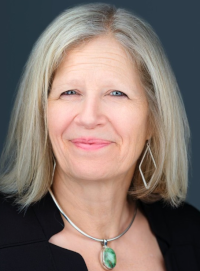
Chief Operating Officer
Fermata Energy
profile

Manager; EV Vehicle-Grid Integration
Nissan Motor Corporation
profile

Sr. Product Manager Electrification
Sunrun
profile
10:15 - 10:45 am
In this session, each company participating in the demos will provide a brief overview of what they will be displaying.

James Mater
Director of Strategy, Smart Grid
QualityLogic
profile

Solution Architect - Smart Grid & Alternative Energy Technology
Keysight Technologies
profile

HEMS System Architect
Eaton
profile

Automotive and Charging Partnerships
WeaveGrid
profile

Manager of Engineering Technology
DTE Energy
profile

Chief Technology Officer
Fermata Energy
profile
10:45 - 11:15 am
Networking Coffee Break
11:15 - 12:15 pm
Demos and Exhibits open
V2G Live Demos by:
- WeaveGrid / Wallbox / Kia
- Fermata Energy
V2G Test Bed Demo by:
- Keysight Technologies / QualityLogic / Heliox (A Siemens Business)
12:15 - 1:45 pm
Lunch Break (Demos and Exhibits open)
Track A
2:00 - 3:00 pm
There is growing interest in the use of virtual power plants (VPP) to provide much needed capacity to the grid by harnessing the untapped potential of distributed energy resources (DERs). This includes the recent passage of landmark VPP legislation in Colorado and Maryland that requires utilities to procure VPP capacity and provide compensation for the distribution services provided.
This session will explore VPPs as an avenue to capture the massive VPP potential that electric vehicles (EV) with V2G systems will represent in the coming years. The panel moderator will lead a curated conversation with leading VPP experts to explore the potential for the VPP pathway to scale V2G. The conversation will cover the following topics:
- What distinguishes a VPP from a DER aggregation?
- Will VPP programs create opportunities currently not available for V2G?
- Are there other VPP assets that would be complementary with V2G when combined in a heterogeneous VPP?
- What is the appropriate role for electric distribution companies and aggregators in the VPP space?
- What are the critical elements in the design of a VPP program to optimize the value of V2G?
The panel moderator will ask each of the panelists to respond to a set of prepared questions and allow opportunity for audience participation.
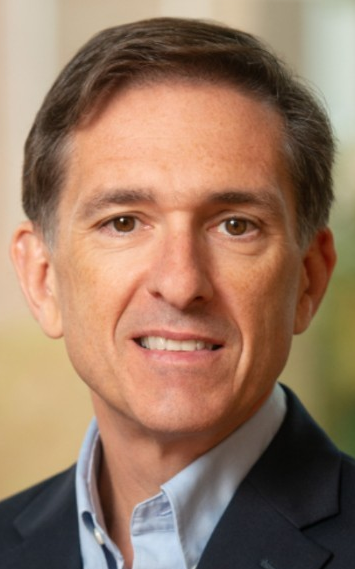
Senior Director of Regulatory Affairs
Fermata Energy
profile

EV Charging Solutions |
Senior Manager - Grid Services
Toyota Motor North America
profile

Engagement Officer, Loan Programs Office
U.S. Department of Energy
profile

Principal, Transportation
RMI
profile
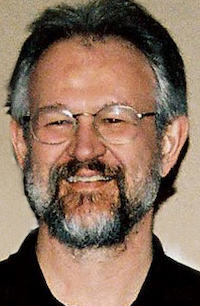
Managing Partner
5 Lakes Energy
profile
3:00 - 3:30 pm
In prior work, E3 has quantified the value of VGI to utilities and to customers. However, despite numerous studies showing that VGI has value, more work is needed to convince planners and regulators that VGI is a viable resource with value for the distribution and bulk grid. In particular, additional public reports that can be widely distributed and referenced in industry forums will be helpful to move the conversation forward.
This session aims to address key gaps preventing utility planners from considering VGI deployment at scale. E3 will provide a brief summary of how benefits of VGI have been shown in prior studies. We will also describe why utility system planners and operators remain skeptical or unconvinced of real-world benefits of VGI, including concerns around reliability, predictability, and locations of VGI contributions.
The session will then describe what analysis will be convincing for system planners: first, modeling specific high value use cases of VGI, such as distribution deferrals; second, modeling VGI as a resource in planning models; third, larger scale demonstration projects that demonstrate a reliable response. E3 will summarize key results needed from analysis and demonstration projects to move forward from pilots to VGI deployment at scale. This includes sufficient data to stochastically represent performance in planning models, such as distribution of load reductions during peak period, percent of vehicles plugged in, charging and participating in a given hour, percent opt-out rates, as well as the ability to represent performance during extreme events, not just average days.

Partner
Energy and Environmental Economics, Inc. (E3)
profile
Track B
2:00 - 2:30 pm
Eaton is developing key technology that sets the groundwork for a V2G future. As V2H is the initial and most readily capable use-case, this feature will enable deployment of V2X capable systems. Eaton is enabling this transition with the launch of its first round of smart panels. These panels tackle key challenges in the marketplace and provide flexibility for all customers.
With UL1741 compliance at the premise these systems are designed to be future ready for V2G integrations that consider other DERs at the premise. This session will cover the whole-home energy system and what complications arise for the V2G use-case. What if they have PV, ESS? How will these system interact with a new V2G installation? How can industry approach this question in an open and collaborative way so we can achieve our V2G goals.
Key takeaways:
- Enabling the adoption of V2X technology
- Establish base network of V2X capable homes (using V2H)
- Leverage this existing network as utility adoption and programs develop
- Answering the key architecture question: Where does the V2X panel go?

HEMS System Architect
Eaton
profile
2:30 - 3:00 pm
This session will provide further insight into the V2X demonstration presented at the V2G Forum. The discussion will focus on the specific roles of each partner in developing a functioning end-to-end solution and the key standards adopted. Wallbox will present the Quasar 2 bi-directional charger, designed for vehicle-to-grid capabilities, while Kia will discuss the importance of V2G technology in the EV9, their bi-directional-compatible vehicle. WeaveGrid will discuss the software platform that supports grid interaction, charging and exporting optimization, and renewable energy integration. The session will explore how these technologies are transitioning from demonstration projects to real-world applications, with potential benefits such as cost savings for drivers and enhanced energy resilience.

Senior Product Manager
Weavegrid
profile

Product Manager
Wallbox Chargers
profile
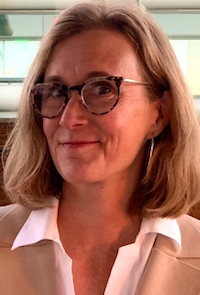
Business Development, Energy and Utility Partnerships
Wallbox Chargers
profile

Senior Regulatory Strategy Specialist, Product Strategy & Mobility
KIA North America
profile
3:00 - 3:30 pm
As utilities and automakers seek to rapidly solve new load management challenges, incorporating vehicle-to-home (V2H) integrations into existing demand flexibility programs can accelerate widespread vehicle-to-grid (V2G) deployment. In this session, Ford and EnergyHub share key learnings from the launch of V2H-capable EVs in National Grid's Massachusetts ConnectedSolutions battery demand response program.
We will explore the process of adding Ford Lightning EVs to the program, which have been dispatched in parallel with the grid and in tandem with the ConnectedSolutions battery portfolio. Operating under the same program parameters and incentives as stationary battery energy storage systems (ESS), Ford Lightning EVs have covered home load across dozens of dispatches, reducing daily peak load.
This initiative lays the foundation for full V2G export capability at scale as more EVs are enrolled. This case study offers lessons for stakeholders in the V2G ecosystem, highlighting the challenges and opportunities ahead in the journey to widespread V2G deployment.
Key takeaways:
- Learn how utilities can work with OEMs to incorporate V2X into existing flexibility programs.
- Discover how V2X-capable EVs can be dispatched under the same parameters and incentives as stationary battery ESS, providing a turnkey program launch strategy.
- Learn how to design flexibility programs that enable V2X at scale as technological and regulatory changes accelerate.

Senior Manager, EV Business Development
EnergyHub
profile

Sr. Product Manager - Energy Services
Ford Motor Company
profile
3:30 - 4:00 pm
Networking Coffee Break
Track A
4:00 - 4:30 pm
The consumer is now generating power and is moving to the center of the energy equation. EV drivers, through bidirectional charging, have the ability to store and supply energy, transforming from passive customers to active participants in the energy market. Recognizing this shift, the automotive and energy industries have already shifted their technology investments, but all the stakeholders have to keep an eye on enhancing the end customer experience, ensuring that V2X solutions are seamless and intuitive.
Kaluza's surveys and trials with thousands of UK drivers have highlighted two significant challenges: V2X requires a substantial upfront commitment without clear value, and there are limited opportunities to engage customers with smart charging.
In this session, Jonathan Levy, US Managing Director at Kaluza, a leading energy software platform, will discuss lessons learned from programs in Europe on the importance of creating compelling program incentives and developing a seamless, "set and forget" experience with backend complexity management. Jonathan will also explore how the US V2X industry can move beyond pilot mode, focusing on the constraints posed by current platform architectures that slow down progress. This session promises to provide valuable insights into developing customer-friendly V2X solutions that can scale.

US Managing Director
Kaluza
profile
4:30 - 5:00 pm
The California Public Utility Commission assumes the only way to bring electricity to public charging stations is to pay the investor-owned utilities to add new capacity. We challenge that assumption. Our modeling shows that it is cost-effective for local property owners to build carport-mounted solar arrays over parking lots to power charging stations directly without adding utility capacity to a site. This also facilitates the goal of shifting charging to the daytime when cars are at work.
Further, V2H capable cars that charge during the day and carry energy home in the evening are a form of transmission. This energy can alleviate the need to upgrade local distribution lines to permit building electrification. The availability of EV V2H energy in the evening will substantially reduce the need for utility-scale batteries to provide power after sunset.
Key takeaways:
- Locally-owned solar powered charging stations are feasible.
- This allows building charging stations without adding utility infrastructure.
- Bidirectional cars charged during the day can carry charge home in the evening; reducing the requirement to upgrade distribution circuits to permit building electrification.
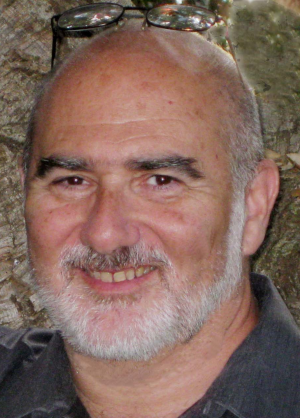
Executive Director
Center for Community Energy
profile
Track B
4:00 - 4:30 pm
The Mobility House currently provides technology and operations for AC V2G products for residential customers in France and Germany. This session will report initial data and learnings from these programs, including the groundbreaking partnership with Renault's energy business, Mobilize, for the V2G technology behind the 2024 R5. We will share details of the product offering to vehicle owners, including the bidirectional charger and green electricity tariff and discuss how the structure of the EU regulatory environment enables AC V2G interconnection for consumers and aggregation of those assets for wholesale trading.
Key takeaways:
- Technical challenges of AC V2G interconnection,
- Aggregation of residential V2G systems for wholesale market participation,
- Incorporation of those wholesale values into a variable residential rate without exposing the customer to financial risk,
- How are these elements commercially available and viable in Germany, France, and other EU markets, but not in the US, and does a pathway exist to get there in the US?

Vice President of Vehicle Grid Integration
The Mobility House
profile
4:30 - 5:00 pm

Principal Electrical Engineer
Argonne National Laboratory
profile
5:00 - 6:45 pm
Networking Reception + Informal Brainstorming
Sponsored by Honda
Thursday, October 24, 2024
8:00 - 9:30 am
Welcome Breakfast - Exhibits and Demos Open
9:30 - 10:45 am
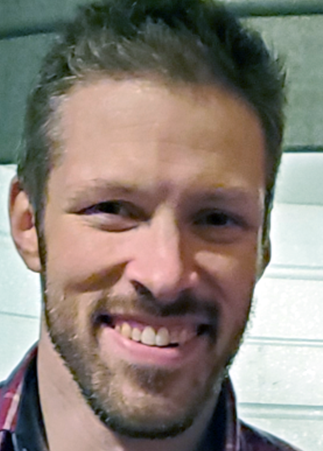
Blake Heidenreich
Strategic Advisor, Transportation Electrification
Southern California Edison
profile

Physical Scientist, Office of Policy
U.S. Department of Energy
profile

Senior Analyst, Research & Industry Strategy
Smart Electric Power Alliance
profile

Interim Executive Director
Vehicle-Grid Integration Council (VGIC)
profile
10:45 - 11:15 am
Networking Coffee Break
11:15 am - 12:30 pm
This panel reports on efforts by a cross-industry group to create the conditions for V2G to be based on mass-produced components, enabling low-cost V2G systems, able to be readily permitted, and with access to multiple markets. The regulatory conditions are now coalescing at both the state and federal level. Focused on EV charging, the panel will review the regulatory pathways available for interconnection, injection, metering, and utility versus RTO market access.
Up to now most V2G has used DC charging stations because standards and regulations developed for solar inverters are more adaptable to a bidirectional DC charger at a permanent location, with inverter installed within the charging station. Similarly, the process of configuring a DC station inverter with local grid codes is more analogous to methods for solar and for fixed location storage. In the last couple of years, the needed standards have been developed for mobile inverters, making standards-compliant AC V2G practical. The main motivation for AC charging is the much lower station cost.
On the vehicle side, many or most global OEMs have announced coming vehicles with bidirectional AC chargers onboard, but few have adopted high-function signaling for V2G. The appropriate standards, SAE J3072, J3068, and J3400, now all passed, provide comprehensive standards for AC charging, IEEE1547 compliance, and high functionality V2G.
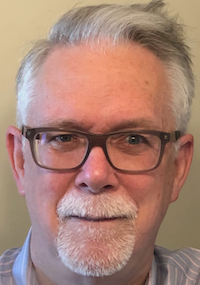
Prof. Willett Kempton
Department of Electrical and Computer Engineering
University of Delaware
profile

Department of Electrical and Computer Engineering
University of Delaware
profile

Business Strategy and Delivery Lead
Ford Energy Services
profile

Lead Business Solutions Analyst
PJM Interconnection
profile
12:30 - 1:30 pm
Lunch - Exhibits and Ad Hoc Demos
12:30 - 1:30 pm

Blake Heidenreich
Strategic Advisor, Transportation Electrification
Southern California Edison
profile
1:30 - 2:30 pm
2:30 - 2:45 pm
Coffee Break
Track A
2:45 - 3:45 pm
There are approximately 140M homes in the United States and about one in three have a load center smaller than 200 amps, which makes it highly likely those homeowners will require a load center upgrade or a load shedding alternative. Electric vehicle purchasers continue to indicate they want home charging, but at the lowest potential cost. This session will examine this infrastructure challenge as planning for the move toward V2G gets underway in the U.S.
We will also discuss the importance of reducing installation cost (electrician time) for end customers. Electric Vehicle buyers face two fundamental problems: 1) There is no charging solution at the point of sale (i.e., referrals to marketplaces and or electrical shops), and 2) Poor customer experience (High friction buying experience: dealers are ill equipped to advise and customers are left to call contractors on their own. Legacy electrical shops won't offer a quote until after they have visited the home). The customer experience is misaligned with the current EV market -- luxury buyers want a white glove experience, while non-luxury buyers want predictable costs. Current market solutions deliver neither. This session will examine technology strategies for addressing this key hurdle, focusing on simplifying electrification through software-driven installation as a service.

Leader of V2X
Eaton
profile

Chief Executive Officer
Treehouse
profile
Track B
2:45 - 3:15 pm
To unlock the V2G potential of EV/EVSE technologies, it is both necessary to lay an EV/EVSE-industry specific regulatory foundation, and to integrate these efforts into overall Grid Modernization. This session will discuss foundational efforts to overcome regulatory roadblocks to EV industry-specific technology deployment, leveling the playing field by addressing the benefits of their unique technical and operating characteristics.
The talk will also discuss how these foundational efforts are shaping an holistic framework to evolve a dynamic, digitized and decentralized integrated grid, drawing upon the capabilities of smart communications and control technologies; distributed intelligence; and new data management and analytical tools and methods. EV/EVSE technologies with smart enabling technologies are distinctively supporting the development of an interactive, distributed grid that can create value, using wholesale and retail markets to coordinate and optimize multiple resources to generate a wide range of cost-effective grid services and customer benefits; expand the delivery of efficient and reliable electricity services and improve overall social welfare.
Key takeaways:
- Unlocking the potential of V2G requires both laying an EV/EVSE industry specific regulatory foundation and integrating reform efforts into the comprehensive development of a new Grid Operating System;
- EV-EVSE industry specific regulatory changes need to assure that the unique technical and operating characteristics of these distributed technologies are taken into account in utility planning, investment/procurement and operations to realize their benefits;
- Foundational EV/EVSE industry specific reforms and standards need to be integrated into overall Grid Modernization to assure that they help shape the parameters and functionalities of a new dynamic, digitized, and decentralized "Integrated Grid;"
- EV/EVSE with enabling smart technologies and new data management and analytical tools can distinctively influence the parameters and functionalities of a new Integrated Grid and, therefore, need to be reflected in a new electric utility sector regulatory paradigm to support an Integrated Grid and accelerate V2G;
- Regulatory reforms are underway both to lay an EV/EVSE industry-specific foundation, (reducing legacy barriers and levelling the playing field for these distributed resources); and to contribute to the development of a comprehensive regulatory framework for Grid Modernization (regulatory changes and innovations to capture optimal value from the multi-use/application of EV/EVSE resources interacting with other distributed energy resources within a digitalized and interconnected electric sector).

Chief Business & Regulatory Innovations Officer
General MicroGrids
profile
3:15 - 3:45 pm
NREL has supported standards work. This includes the Electric Vehicles At Scale Consortium (EVaS) consortium which has brought multiple national laboratories together, and NREL has resumed its support for V2X AC standards. Its initial scoping research has identified V2G AC ecosystem and has confirmed that the UL 1741SC is a key standard for the V2G AC deployment in the field. This session will summarize the scope of our work and reveal our V2G evaluation platform that enables the evaluation of proposed conformance requirements in support of UL 1741SC.
The audience will be taken to a walk-through of V2G enabler programs, standards, and summary of communication paths, and will learn about what NREL?s future work for V2G AC. The audience will also be able to learn about NREL's VGI research capabilities, including V2G AC.

Electric Vehicle Charging Hardware Systems Researcher, Advanced Vehicles and Charging Infrastructure Department (AVCI)
National Renewable Energy Laboratory (NREL)
profile
-----------------------------------------------------
3:45 - 4:15 pm
This session will present on the V2X research at Idaho National Lab focused on cybersecurity and cyber-physical security of V2X systems, funded by US DOE VTO and CESER offices.
- Overview of the V2X Café at Idaho National Laboratory's Electric Vehicle Infrastrucutre Lab (EVIL)
- Hardware, research scope, and capabilities used for VTO EVs@Scale Cybersecurity Pillar and the US DOE CESER EV SALaD program
- Anonymized findings so far from the VTO EVs@Scale Cybersecurity Pillar - For V2X systems (V2H and V2G) intended for light duty and medium duty EVs
- Present on EV SALaD Cybersecurity best practices demonstration (collaborative effort: INL, PNNL, SNL funded by US DOE CESER office)
- Sept. 2024 demo - Demonstrate identified exploitable vulnerabilities from 3 V2X systems
- 2025 demo (adding onto 2024 demo) - Demonstrate identified exploitable V2G and V2H vulnerabilities
- Invite industry participation and collaboration with this "V2X Cyber Best Practices" demonstration project
- Highlight potential impact severity from exploited vulnerabilities based on consequence-driven vulnerability assessment and lab-based hardware / software evaluations to verify: Grid Impacts, Safety, Hardware damage, Denial of Service, Data Theft/Alteration
- Demonstrate mitigation solutions to identify, and respond to exploits or anomalies
- Highlight recommended V2X cybersecurity and cyber-physical security best practices
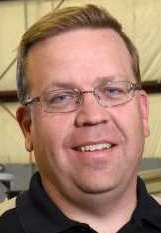
Research Engineer, Electric Vehicle Infrastructure Lab (EVIL)
Idaho National Laboratory
profile
4:15 - 4:45 pm
One of the biggest challenges for scaling V2G is the non-interoperable protocol and non-standardized grid codes. This lack of standardization prevents economies of scale, real market competition, and price reductions for the V2G infrastructure, thereby delaying the widespread adoption of bidirectional technologies. A true breakthrough can only be achieved if solutions for both AC and DC bidirectionality, including the relevant grid code aspects, are developed, and standardized globally. To address interoperability issues, The International Energy Agency in May 2024 has initiated the HEV TCP Task 53: Interoperability of Bidirectional Charging (INBID).
This task aims to test conformance to the upcoming ISO 15118-2X amendments related to bidirectional charging. It has two main objectives:
1. Ensure interoperability between bidirectional charging stations and vehicles.
2. Ensure interoperability between bidirectional charging stations and distribution grids.
Companies, universities, and institutions from participating IEA partner countries (US DOE has already signed on) are invited to join the effort to make bidirectional charging interoperable by becoming industry partners of INBID Task 53.
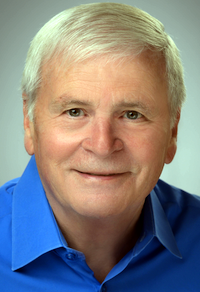
Managing Director
Next-Dimension
profile
4:45 - 5:00 pm









